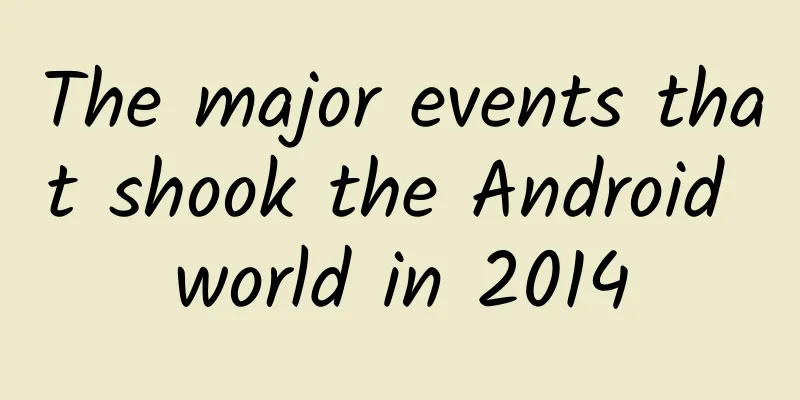Scientists: A black hole is rushing towards the Earth at high speed! Can humans escape it?

|
As we all know, black holes are at the top of the food chain in the universe, eating all kinds of celestial bodies. Therefore, if a black hole came to the solar system, not only would humans be doomed, but the earth would also be eaten, and the entire solar system would be eaten. But in this world, the more you worry about something, the more likely it is to happen. Just now, through observation, astronomers discovered that a black hole is heading towards the Earth at a high speed. This black hole is numbered GRO J1655-40. Humanity is constantly facing disasters: internecine wars, plagues, asteroid impacts, greenhouse effects, etc., which constantly threaten human survival. The COVID-19 pandemic has been going on for three years and has killed more than 6.22 million people so far, and it is not over yet. Will black holes also join in the fun and swallow the Earth whole? How big a threat do black holes pose to humans? In fact, if the black hole is not close to us, there is no threat. The biggest threat of a black hole is its extreme gravity, but this extreme will only occur when we enter its extreme gravity range. That is, when we are close to the Schwarzschild radius of the black hole, commonly known as the black hole event horizon, the gravity will be very extreme. This range is very small. For a black hole with a mass like the sun, the Schwarzschild radius is only about 3,000 meters. The Schwarzschild radius is proportional to the mass. Once you enter this Schwarzschild radius gravitational circle, even light cannot escape, that is, you cannot escape even if you run at the speed of light. Before entering the Schwarzschild radius, the closer you get to it, the greater the gravitational force. As long as we are not close to it, at a distance, the gravity of a black hole is the same as that of any celestial body with the same mass. For example, if there is a black hole with the same mass as the sun at the current position of the sun, the earth will still be subject to the same gravity and will revolve around the black hole without falling into it. However, if the sun turns into a black hole, there will be no sunlight, the earth will lose heat radiation and become cold, as cold as minus 200 degrees Celsius, everything will freeze and life will end. Theoretically, there may be many primordial small black holes in the universe from the early days of the Big Bang, but none have been discovered so far. The smallest mass of the black holes discovered is more than 3 times the mass of the sun. These black holes are left behind after the explosion and death of massive stars. Therefore, black holes can also be said to be the corpses of massive stars. It is generally believed that for stars with a mass more than 30 times that of the sun, if there is a remnant core of at least 3 solar masses left in the core after a supernova explosion, it will collapse to form a black hole. Some people say that stars with a mass of more than 3 times the mass of the sun will leave behind a black hole after death, which is wrong. Stars with a mass of less than 8 times the mass of the sun will only leave behind a white dwarf after death, and stars with a mass of more than 8 times the mass of the sun but less than 30 times the mass of the sun may leave behind a neutron star after death. A neutron star can only collapse into a black hole when it has absorbed more than 3 times the mass of the sun. How Much Do We Know About Black Holes in the Universe? It is now known that almost all larger galaxies in the universe have a supermassive black hole at their core, and the black hole at the core of our Milky Way is about 4 million times more massive than the sun. This is just a tiny sesame seed in the universe. The first black hole photo taken by scientists in 2017 was a black hole located at the center of the M87 elliptical galaxy, about 55 million light-years away from us, with a mass of about 6.5 billion times that of the sun. The TON618 black hole, which is 10.4 billion light-years away from us, has a mass 66 billion times that of the sun and was once considered the largest black hole in the universe; but it was far surpassed by a newly discovered black hole a few years ago. This black hole, numbered SDSS J073739.96+384413.2, has a mass 104 billion times that of the sun! However, in May 2020, Finnish scientists discovered a larger black hole, numbered SDSS J140821.67+025733.2, about 3.5 billion light-years away from us, with a mass of 196 billion times that of the sun! It is equivalent to the mass of the entire Milky Way! Nearby, there is a smaller black hole with a mass of about 100 million times that of the sun orbiting the large black hole, with a cycle of about 12 Earth years. These massive black holes are so terrifying. According to scientific research, these black holes were formed by the direct collapse of huge massive nebulae in the early days of the Big Bang, or the early days of galaxy formation. After their formation, they have been swallowing up surrounding celestial bodies and matter, and are still swallowing now, so they are getting bigger and bigger. Although the black hole formed after the death of a massive star is constantly absorbing surrounding celestial bodies and matter, it is impossible for it to grow so large. Since the universe is already 13.8 billion years old, there were many massive stars in the early days of the universe, with short life spans, and many black holes were formed, so the universe is full of black holes. However, black holes cannot be observed directly and can only be discovered through indirect methods. The main thing is that when a black hole devours the surrounding celestial matter, it will form a bright accretion disk around itself; the gravity of the black hole will affect the movement of the surrounding celestial bodies. In this way, scientists can infer whether there is a black hole and its mass through observation and calculation. Because of this, very few black holes have been discovered. So far, more than 60 black holes have been observed in the Milky Way, and more than 100 black holes have been accurately located in the universe. However, scientists estimate that there may be at least 1 million to 100 million black holes in the Milky Way alone; and the entire observable universe has trillions of stars, and there may be at least 400 trillion black holes. However, it is rare to find a black hole rushing towards the Earth, and GRO J1655-40 seems to be an exception. Will the GRO J1655-40 black hole eat the Earth? The GRO J1655-40 black hole is about 6,000 light-years away from us and has a mass about 7 times that of the sun. It is currently slowly devouring a star about 0.5 times the mass of the sun. The star is being pulled around by the nose by the black hole's gravity, and each rotation takes about 2.6 Earth days. French astronomers were surprised to find that this black hole is running towards the earth at a speed four times greater than that of a nearby star. There is no information on which nearby star it is, but I think it should be the star that orbits the black hole every 2.6 days. However, since there is no data on the distance between the star and the black hole, it is impossible to calculate the linear speed of its movement. Astronomers believe that if it continues to run towards the Earth at this speed, it will probably meet the Earth in 10 million years. If this is true, then the end of the Earth will come in 10 million years, and even the end of the entire solar system will come. According to the age and lifespan of the sun, it will die in 5 billion years. However, the creatures on Earth do not have such a long life. The sun is getting brighter and hotter. In about 1 billion years, the high temperature of the sun will evaporate all the water on Earth, and the sea will dry up and the rocks will crumble. Therefore, 1 billion years ago, humans should have fled and immigrated to other planets for refuge, otherwise they would die. Some people may say that even 10 million years later, it will have nothing to do with us, nor with our descendants' descendants' descendants. If humans still exist 10 million years later, they will have developed to an unbelievable level. Why would they still be afraid of a tiny black hole? I think so too. But we cannot conclude that black holes pose no threat to us. Previously, the closest black hole to us was discovered to be V616 Monocerotis, which is about 2,800 light-years away from us and has a mass about 10 times that of the sun. Other relatively close black holes include Cygnus X-1, which is about 6,100 light-years away from us and has a mass about 20 to 40 times that of the sun; and Cygni V404, which is about 7,800 light-years away from us and has a mass about 12 times that of the sun. But in 2021, scientists discovered a black hole that is even closer to us, only 1,500 light years away. This black hole is called "Unicorn" and has a mass of about three times that of the sun. Astronomers calculated the mass of this black hole by finding that a red giant star was distorted and inferring that there was an invisible gravitational source at work nearby. (See the first picture in this article) If there is no celestial matter around the black hole, it cannot be discovered. Because of this, we don't know how many black holes there are around us, and whether there are black holes that are already very close or still approaching, staring at us eagerly? Therefore, GRO J1655-40 may just be a warning. If a black hole really enters the solar system and begins to produce gravitational tidal effects, there will be no escape for humans today. If human beings want to continue to live longer, they can only continue to develop science and technology, improve their ability to resist natural disasters, or improve their ability to escape, and all this requires the unity and cooperation of human beings. Looking at the current world situation, it seems to be going in the opposite direction. Can humans develop to a high level of civilization and avoid all kinds of natural disasters? Welcome to discuss, thank you for reading. The copyright of Space-Time Communication is original. Infringement and plagiarism are unethical behavior. Please understand and cooperate. |
<<: National Botanical Garden: enjoy the flowers and learn the names of plants
>>: I am usually very gentle, so why do I get angry easily when I drive?
Recommend
The June Douyin course of Shudi Research Institute: Douyin Mini Program 2.0 will definitely explode with routines. How to make hundreds of yuan a day with zero fans and no display window
The June Douyin course of Shudi Research Institut...
Apple Pay's future of attracting money across the sea is uncertain, and Alibaba Terminal is the key
Soon after the launch of the new iPhone, Apple Pa...
6 common pitfalls in operating activities. Have you encountered them?
A few days ago, I posted a brainwave, and then......
Do you know about the top 10 most popular fission marketing?
The article breaks down the top ten most popular ...
How to fully plan a screen-sweeping event?
“Behind every successful case, there is a methodo...
A comprehensive review of online education live broadcast operation skills
" Online education " and "live str...
What frameworks are there for mobile app development?
Inventory of Mobile APP Development Framework Gen...
Can product managers help traditional TV terminals trigger a wave of home entertainment?
On the road of Internet development, product mana...
China Passenger Car Association: It is expected that by December 2024, the retail sales of passenger cars will reach 2.7 million, and the penetration rate of new energy vehicles will reach 51.9%
According to recent news, the latest data from th...
The "four-step" process of adjusting attitude, descending and parachuting to land analyzes the return process of Shenzhou XII!
Produced by: Science Popularization China Produce...
With an efficiency of 75%, the photography industry can double the click-through rate of information flow advertising by doing this!
As costume photography is sought after by more an...
Southern Year of the Rat Horoscope Software, Southern Year of the Rat Horoscope-2020V2.3.0 Registration-free version!
Southern Year of the Rat Horoscope-2020 V2.3.0 Th...
Taizhou SEO Training: What should I do if the website being optimized is frequently attacked? Find a caching tool to help
In the process of website optimization, it is oft...









